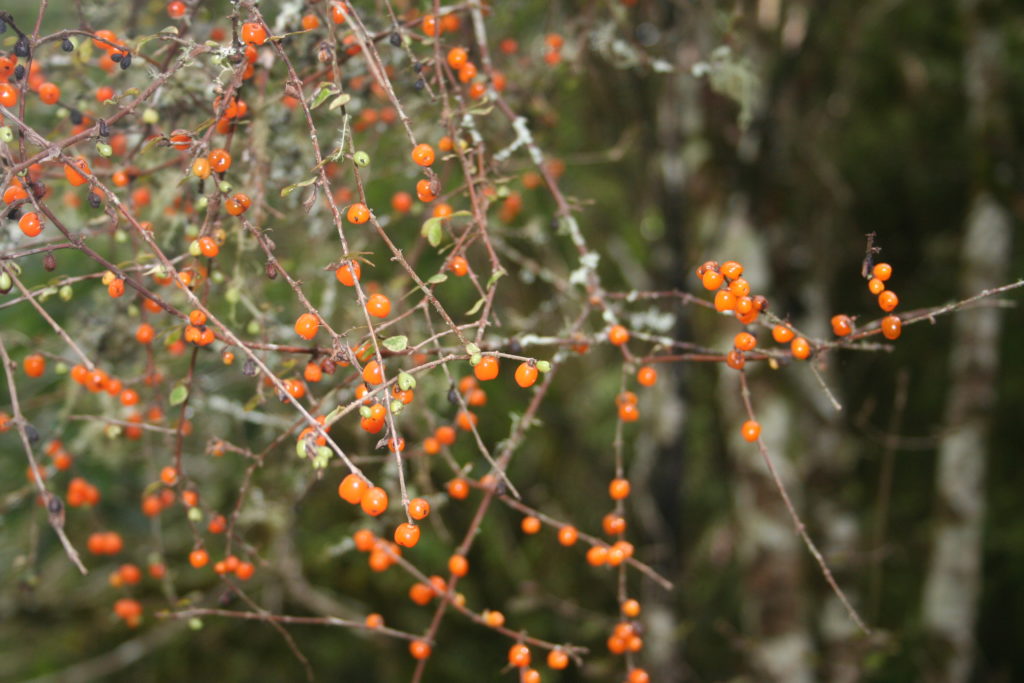Coprosma rigida is one of a group of shrubs and small trees superbly adapted to flood zones. This is a particularly challenging environment because along some of our rivers and around wetlands the ground might be waterlogged for several months during the winter then the sandy or silty soil might be quite dry all summer. This combination of conditions is too harsh for so many trees and shrubs, giving Coprosma rigida and a few other species a really competitive advantage.
 This really old Coprosma rigid tree shows the size to which they can grow.
This really old Coprosma rigid tree shows the size to which they can grow. Some years Coprosma rigida produce copious amounts of fruit like this tree at Karakariki
Some years Coprosma rigida produce copious amounts of fruit like this tree at Karakariki
Unfortunately these riparian margins are ideal productive land so healthy intact forest ecosystems along our rivers and around our wetlands are rare. Coprosma rigida (sorry no common name) has become uncommon. It is found in small pockets of low lying ground on river islands or below steep banks which is hard to get to or farm profitably.
The few remaining Coprosma rigida along our rivers are ageing and occasional browsing seems to discourage young recruits. In the time I have been looking out to collect seed I have seen several grow old and fall over and none have grown up to replace them. So to make sure I can get enough seed to reestablish forest the way that I think is important I am having to augment the seed I can collect from wild sources with seed from shrubs I have planted in protected areas.
Ecosourcing ideally collects seed from a representative sample of a local wild population. I have to be really careful when collecting seed from my planted sources that I have a record of the original wild source as well as the collection site. If we want to restore resilient authentic ecosystems this may be our only option as we continue to modify the natural world.